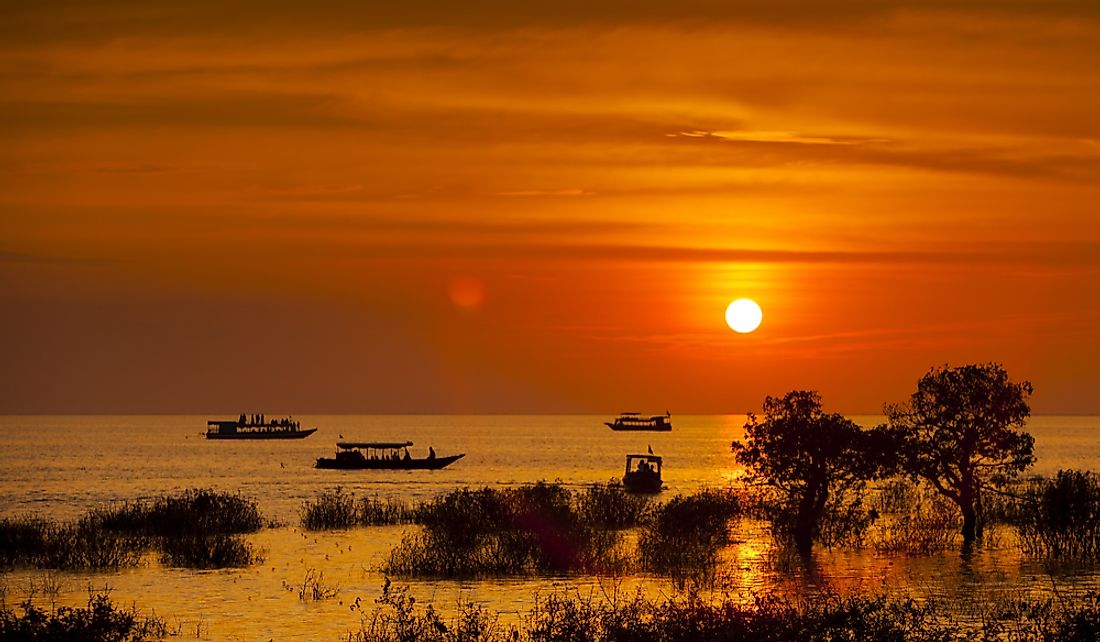Which Is The Largest Freshwater Lake In Southeast Asia?

Southeast Asia is a sub-region of Asia that is composed of nations that are north of Australia, south of China, east of India, and west of Papua New Guinea. The sub-region occupies an area of about 1.7 million square mile and has a population of over 641 million people. The mixture of mainland and island nations have ample maritime resources. Southeast Asia's largest freshwater lake is Cambodia's Tonle Sap Lake.
Tonle Sap Lake
Tonle Sap is a seasonally inundated lake that is linked to River Mekong by a 75 mile-long river. Tonle Sap Lake occupies the geological depression of the lacustrine and alluvial floodplain of lower Mekong Basin. The depression was formed by the collision between the Eurasian and Indian plates. The size of Tonle Sap Lake varies from about 965 square miles in late-April (dry season) to 6,178 square miles during the wet season (September to October). The lake’s volume also increases from 0.24 cubic miles in April to 19 cubic miles during the wet season.
Flow reversal and Volume Fluctuation
Inflow begins in either May or June and ends in October. The flow rate reaches a maximum of about 10,000 cubic miles per second by late August. Tonle Sap Lake reaches its maximum size by November when the annual monsoon ceases. Since River Mekong is at its low in November, its water level drops lower than the lake’s level; therefore lake’s water begins draining to the Mekong River via River Tonle Sap. Tonle Sap River flows from Mekong River to the lake for six months annually and then in reverse direction for the remaining six months.
Tonle Sap Biosphere Reserve
The UN’s Educational Scientific and Cultural organization named Tonle Sap as one of the ecological hotspots in the world in 1997. Therefore by a royal decree of the Cambodian government, the lake and its surrounding region became the Tonle Sap Biosphere Reserve in 2001. The biosphere reserve is composed of nine provinces including Pailin, Battambang, and Banteay Meanchey among others.
Benefits of Tonle Sap Lake
The region has always been of great importance to the food supply in Cambodia since it is a very productive ecosystem. It was capable of supporting the Angkorean civilization, one of the biggest pre-industrialization settlements in history. The start of the dry season in the region marks the beginning of the rice season. The Angkorean civilization dug many reservoirs in the wet seasons and released the water during the dry season for irrigation purposes. Currently, the farmers get one rice crop per year, since the irrigation networks don’t exist. The lake also supports the Cambodian fishery industry. The fisheries in the country are split into two categories the open-access and limited fishing. The Cambodian fishery has been privatized for over a century through the Cambodian government leasing system on the fishing lots. The fishing lots provide over US$2 billion in tax revenue annually.











